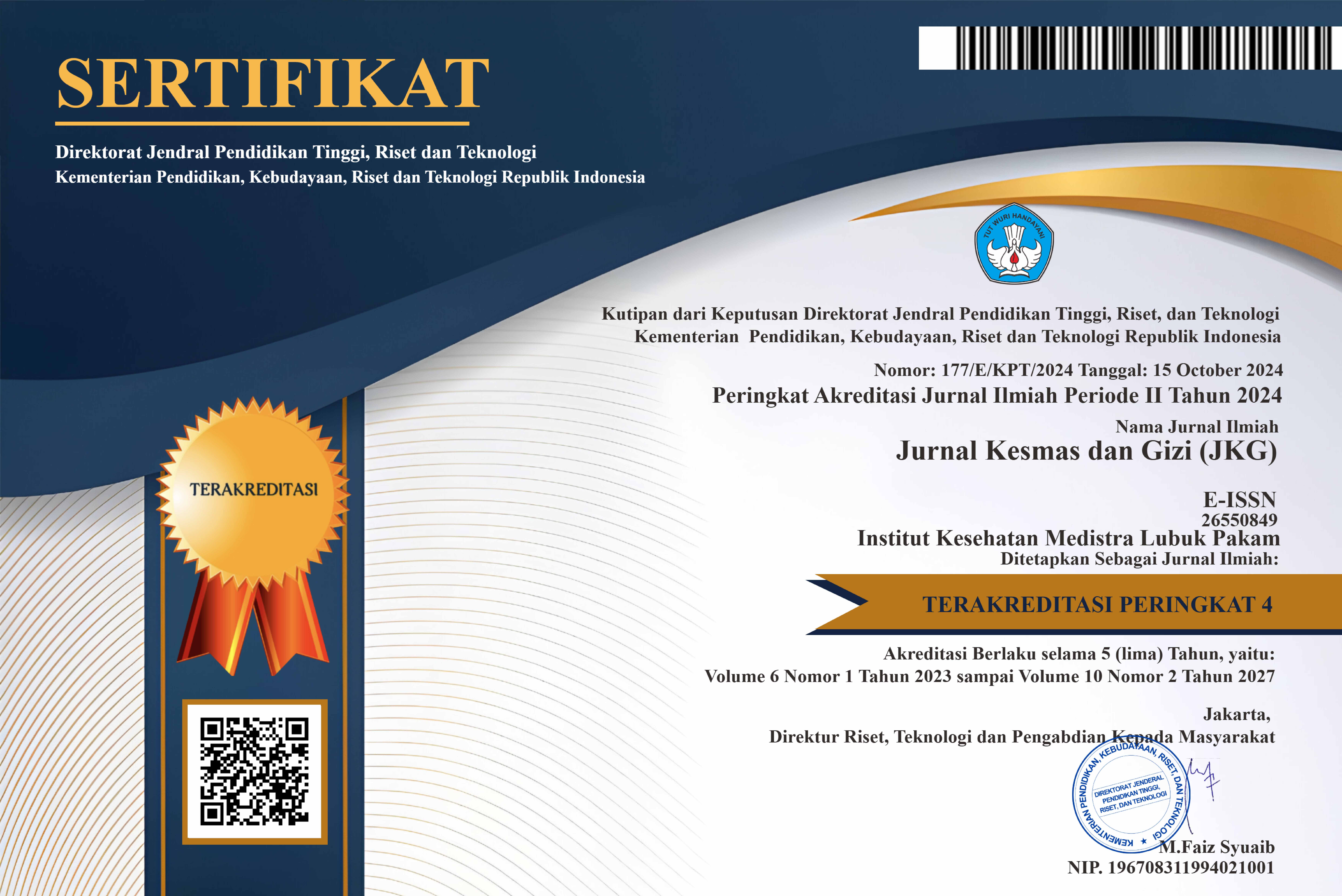DETERMINANTS OF NURSE COMPLIANCE IN THE USE OF PERSONAL PROTECTION EQUIPMENT (PPE) IN GRANDMED HOSPITAL LUBUK PAKAM IN 2021
DOI:
https://doi.org/10.35451/jkg.v5i1.1231Keywords:
Compliance, Tool, Protector, SelfAbstract
The World Health Organization (WHO) has identified the importance of applying vigilance among health workers in all actions to prevent an increase in health care-associated infections (HAI). The use of Personal Protective Equipment (PPE) is one of the important issues in the medical world that is often neglected in its use. This study aims to analyze the determinants of nurse compliance in the use of PPE. Quantitative research with analytical survey design. Respondents in this study were all 62 nurses who used target sampling with Chi-Square test and continued with multiple logistic regression test. The results showed that there was an effect of knowledge (p = 0.002), risk perception (p = 0.009), and workload (p = 0.007) on nurses' compliance in using PPE. Knowledge is 4 times more effective for nurses who are obedient to PPE. It is expected that the hospital will provide knowledge and skills training to nurses by providing education and training on the use of PPE on a regular basis.
Downloads
References
Reda, Ayalu A., Shiferaw Fisseha, Bezaty Mengistie, Jean-Michel Vandeweerd. 2018. Standard Precautions: Occupational Exposure and Behavior of Healthcare Workers in Ethiopia. PLoS ONE, 5 (12).
Kemenkes RI. 2017. Pedoman Manajerial Pencegahan Dan Pengendalian Infeksi Di Rumah Sakit Dan Fasilitas Pelayanan Kesehatan Lainnya. Journal of Chemical Information and Modeling. Jakarta: Depkes RI; 2017. p. 1689–99.
Mehta, A., et.al., 2016. Interventions to Reduce Needlestick Injuries at A Tertiary Care Centre. Indian Journal of Medical Microbiology, 1 (28): 17-20.
Notoatmodjo, S. 2018. Promosi Kesehatan Teori dan Aplikasinya. Jakarta : Rineka Cipta.
Downloads
Published
Issue
Section
License
Copyright in each article is the property of the Author.


























